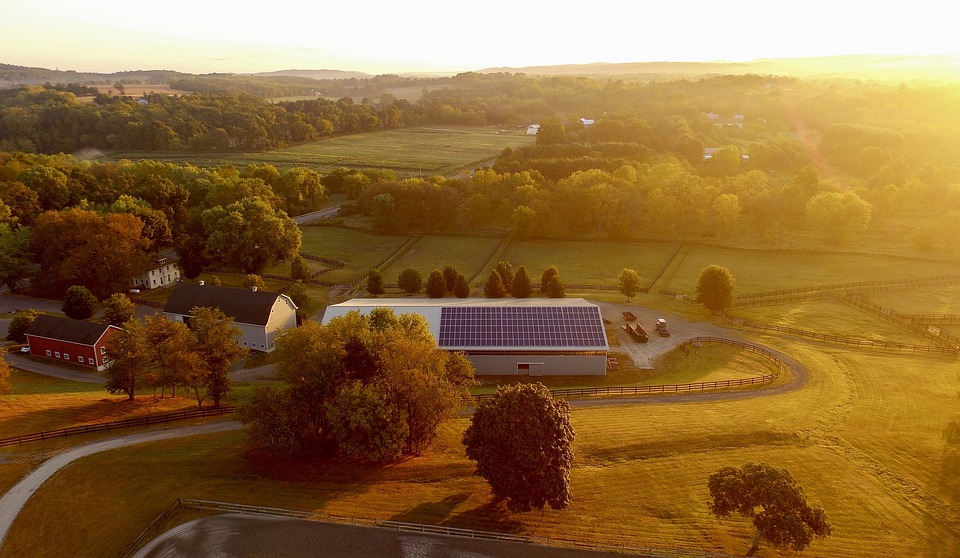
23 Aug Grid-Tied Vs Off-Grid Solar
Now that you’ve decided to invest in solar PV technology for your office or home, the next step is to choose between grid-tied and off-grid solar. Most people who’re concerned about their carbon footprint are led to believe that weaning off the fossil fuel-run grid is the best kind of sustainable living. However, here at SEG we like to provide all the details so you can identify the solution that best meets your goals.
To start, let’s explore the main difference between the two options.
Grid-Tied vs. Off-Grid Solar
The core variance here relates to where each system stores the energy it generates. The panels create a charge when the sun is shining during the day, but they need a place to conserve energy so that it can be delivered on-demand. In grid-tied solar, the energy that’s generated is transferred to the utility grid, with panels feeding electricity to the grid. In return, you get a credit for the energy you contribute, which can be used at any time.
Off-grid solar, on the other hand, requires you to seek another place to store energy. In most instances, you’ll need to buy a battery bank for your installation. Without access to the utility grid, batteries are necessary for every off-grid solar device. An on-site generator may also be needed as a secondary backup in case the batteries run out.
Hence, the key difference between grid-tied and off-grid solar is the way they store energy.
Pros and Cons of Each Solar Type
For many homeowners, a grid-tied solar system is a safe investment that offers predictability and security. In contrast, an off-grid system might be a more suitable choice for isolated localities and cabins. With that said, both of these systems have their fair share of advantages and disadvantages that can help aid your buying decision. Starting with grid-tied solar, below are the pros and cons of both systems.
Pros of Grid-Tied Solar
- Save through net metering: Grid-tied solar connections allow consumers to save more money via net metering, better efficacy rates, and low installation and equipment costs. Because the solar system will generate more energy than what your home or business requires, you can transfer the excess energy onto the grid instead of saving it in batteries. The goal is to offset the cost of the energy purchase by selling the electricity back to the grid.
- Get backup power from the grid: The power grid is also a virtual battery in several ways. It doesn’t require replacements or maintenance and costs much less than battery banks. You can easily access backup power from it in case your solar installation stops creating energy for one reason or another. In addition, you can mitigate the energy provider’s peak load by transferring units when your solar system is functioning well.
Cons of Grid-Tied Solar
- Performance is tied to the grid: If the grid goes down, your solar system will turn off, leaving you without energy. This can stop power from back feeding to the utility grid in order to keep it safe. It is for this reason that grid-tied systems shut off when the grid goes off, and automatically switch back on when functionality is restored.
- Can be costly to source equipment: If you live in a rural area, it can be expense to install the power lines or poles that link your system with the grid. In addition, you may need to consult with a professional installer to ensure the system is well-configured and there are no vulnerabilities that may prevent it from functioning securely.
Pros of Off-Grid Solar
- Eliminates distribution-related inefficiencies: Simply put, in generating your own energy supply, you can see exactly how many units you consume each day. Doing so allows you to bypass the disorganization of distribution and take greater responsibility for your own carbon footprint.
- Saves you from blackouts: When the local grid has no power, a grid-tied solar system has no power. With an off-grid installation, however, you’ll have access to energy, even if the rest of the area is experiencing a blackout. This can be especially useful in remote areas, as you don’t need to worry about when the closest power company will fix its issues.
Cons of Off-Grid Solar
- Can be costly to replace equipment: If you require energy on days when the sun is unable to reach your panels, you’ll need to buy batteries that get the job done. This is a hefty investment, and it won’t last you forever. You’ll need to replace these expensive batteries every five to six years. Plus, some batteries might produce lead acid base, which can be degrade the environment.
- The user is on his/her own: With your personal solar system comes the responsibility to repair it if it goes haywire. The energy company won’t be there to bail you out. That means you’ll need to develop an understanding of how off-grid solar systems work and study the potential errors as well as the correct ways to resolve them efficiently.
What’s the Best Choice for Your Home?
To make the best choice here, you’ll need to weigh many factors: How far do you live from the grid? What’s your home size and typical energy consumption? How much of an initial investment are you willing and able to make?
To get help with your solar decisions, contact our solar energy firm. The more you learn about Solar PV technology, the more confidence you can have in your investment, whether it be grid-tied or off-the-grid.



